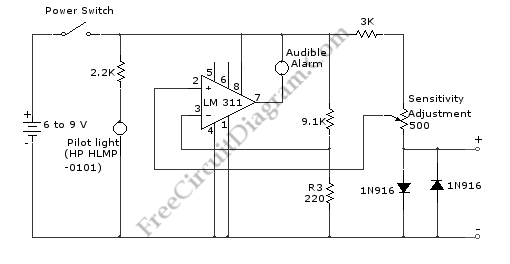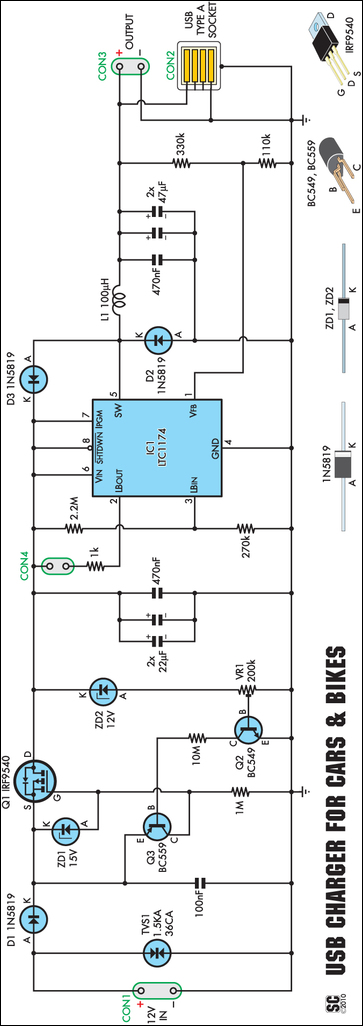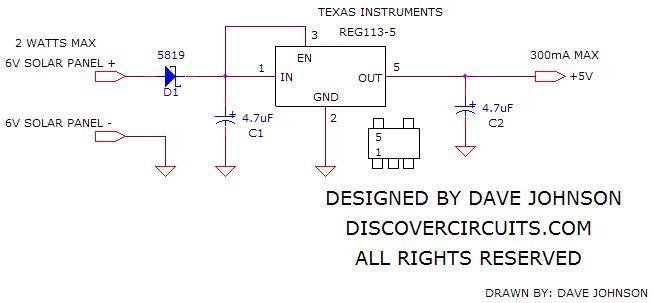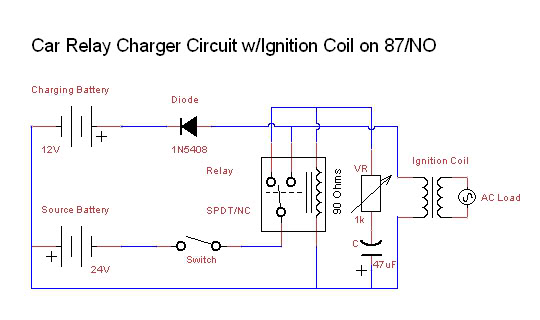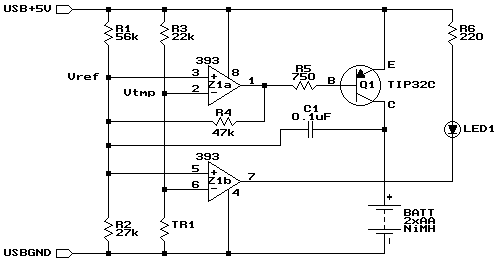
Add current boost to a USB charger
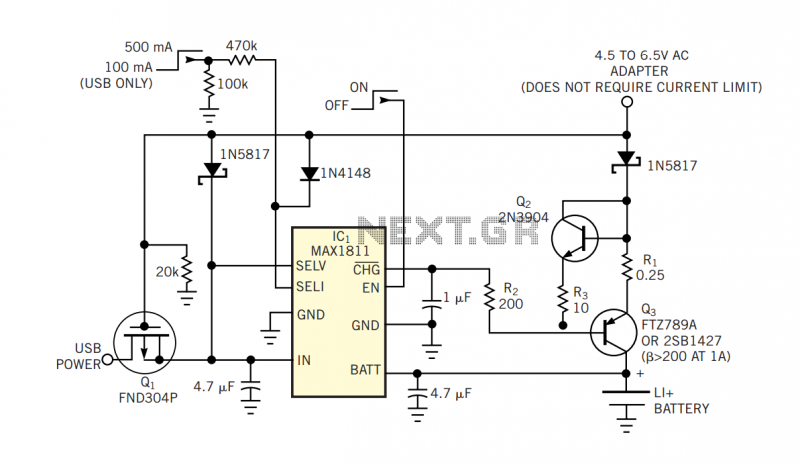
The described circuit provides a dual-input charging solution for lithium-ion batteries, leveraging both USB and AC adapter power sources to enhance charging efficiency and flexibility. The single-chip lithium-cell charger (IC1) is the core component, designed to manage the charging process effectively. When powered via USB, IC1 can be configured for lower charging rates (500 mA or 100 mA), which is suitable for portable applications where charging time is less critical.
In scenarios where the system is connected to an AC adapter, the external transistor current source, comprising transistors Q2 and Q3, becomes active. This configuration allows the charger to increase the charging current to a total of 1100 mA, significantly reducing the time required to charge high-capacity batteries. The current limiting function is crucial to protect the circuit and the battery from overcurrent conditions. Resistors R1, R2, and R5 are strategically placed to establish the threshold at which Q2 begins to limit the current, ensuring that the circuit operates within safe parameters.
The design includes feedback mechanisms to maintain stable operation. The voltage across R3 provides a reference for current limiting, ensuring that the output current does not exceed the predefined values. The selection of transistors with a high beta value (greater than 200 at 1A) is essential for maintaining accuracy in the current source, thereby minimizing potential errors during operation.
Additionally, the circuit is designed to transition smoothly from current mode to voltage mode as the battery approaches full charge, specifically around 4.15V. This transition is vital for tapering off the charging current, which helps to extend the lifespan of the battery by preventing overcharging. The ability of IC1 to continue functioning even when only AC power is available ensures that the charging process is robust and reliable, catering to various usage scenarios. Overall, this circuit exemplifies an efficient solution for modern portable device charging, leveraging both USB and AC sources to optimize performance and convenience.The popular USB interface can charge a portable device while transferring data. But for high-capacity batteries, the 500-mA output current of USB hosts and powered hubs greatly extends the charging time. (Unpowered USB hubs supply no more than 100 mA.) Thus, a system that accepts charging power from an ac adapter as well as the USB port is more convenient.
Such a system can charge from a notebook USB port when you`re traveling, yet can charge faster via the adapter when you`re at home or in the office.
An external transistor current source adds dual-input capability to a single-chip lithium-cell charger (Figure 1). The chip, IC1, operates alone when you connect to USB power and allows you to pin-program it for a maximum charging current of either 500 or 100 mA.
When you plug in an ac adapter, which the 600-mA components set, the external-transistor current source, Q2 and Q3, turns on and sets IC1's charging current to 500 mA. Because IC1 and Q2 both charge the battery under that condition, the total charging current is 1100 mA.
Q2 and Q3 form a current limiter for the ac adapter. The limiter allows Q2 and R1 to pass the additional 600 mA. When the voltage drop across R1 exceeds that across R2, which R2 and R5 set, Q2 begins to turn off. Q2 cancels VBE, enabling R1 to more accurately set the maximum current. Voltage across R3 sets the reference voltage, and the output current limits when the voltage drop on R1 matches the voltage on R3. Q3 should have a beta higher than 200 at 1A, so that IC1's pin can sink enough current to turn on Q3.
High beta also minimizes error in the transistor current source. When IC1 changes from current mode to voltage mode at approximately 4.15V, IC1's output turns off the transistor current source. IC1 remains on and finishes off the taper to full charge. It also remains on and continues to function when USB power is gone and only ac power remains.
